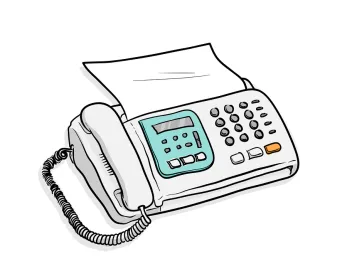Yesterday, the Supreme Court granted certiorari in Carlton & Harris Chiropractic, Inc. v. PDR Network, LLC, No. 17-1705. The case began when Carlton & Harris sued PDR Network for alleged violations of the commercial fax provisions of the Telephone Consumer Protection Act (“TCPA”). The Fourth Circuit ruled in Carlton & Harris’s favor, relying on an interpretation of the TCPA issued by the Federal Communications Commission (“FCC”). The Supreme Court granted PDR Network’s petition to review that ruling, but limited its review to a single question: whether federal courts are bound to accept a federal agency’s interpretation of a statute such as the TCPA without considering the validity of that interpretation. The case has important implications for administrative law that are not limited to the TCPA or to the FCC.
The facts in the case are typical of many TCPA fax cases. Carlton & Harris, a chiropractic office, received a fax from PDR Network offering free copies of an e−book. Carlton & Harris sued, alleging that the fax was an unsolicited advertisement transmitted without consent in violation of the TCPA. PDR Network moved to dismiss the complaint, arguing that the fax could not constitute an unsolicited advertisement because it did not offer anything for sale.
In deciding whether the fax was an unsolicited advertisement, the district court considered whether it had to defer to a 2006 FCC rule in which the Commission interpreted the statutory term “unsolicited advertisement” to include faxes that promote free goods or services. Carlton & Harris argued that the district court lacked jurisdiction to disagree with or set aside the FCC’s interpretation because of the Hobbs Act, 28 U.S.C. § 2342. The Hobbs Act is a federal statute that vests “exclusive jurisdiction” with federal courts of appeal to determine the validity of rules and orders issued by the FCC, the Department of Agriculture, the Department of Transportation, and other federal agencies. The district court held that the Hobbs Act did not prevent it from assessing the validity of the FCC’s 2006 TCPA rule, which the court determined was contrary to the TCPA’s unambiguous text, and thus did not defer to the FCC’s interpretation. The district court then concluded that the defendant’s fax was not an unsolicited advertisement and dismissed the complaint.
Carlton & Harris appealed, and a divided Fourth Circuit panel reversed the district court’s dismissal order. The Fourth Circuit held that the district court exceeded its jurisdiction because the Hobbs Act deprived the court of authority to review the FCC rule. Instead, the majority held, the Hobbs Act requires district courts to defer to an agency’s interpretation (such as the FCC’s interpretation of the TCPA), regardless of whether that interpretation is faithful to the statutory text or suffers from other infirmities. Under the Fourth Circuit’s view, if the defendant wanted to challenge the FCC’s 2006 TCPA rule, its only recourse was to seek judicial review before a circuit court within the 60-day period allotted for appeals under the Hobbs Act, 28 U.S.C. § 2344. And because that time had lapsed, both the district court and the Fourth Circuit were bound by the FCC’s interpretation and lacked authority to independently interpret the statute. After applying the FCC’s interpretation, the Fourth Circuit went on to conclude that PDR Network’s fax was an unsolicited advertisement.
The Supreme Court’s review is limited to the question of whether the Hobbs Act stripped the district court and the Fourth Circuit of authority to review the validity of the FCC’s 2006 TCPA rule, including whether that rule comports with the statutory text. The separate question whether PDR Network’s fax was an unsolicited advertisement is not before the Court—although that issue could be reopened on remand if the Supreme Court rules in PDR Network’s favor.
Because the Hobbs Act applies to rules and orders issued by a broad range of federal agencies, the Supreme Court’s ruling in PDR Network will likely have a significant effect beyond the FCC and the TCPA. Indeed, the Supreme Court’s decision to review PDR Network is the latest in a recent string of cases questioning whether courts should defer to legal interpretations by federal agencies; and several Justices have signaled that they plan to revisit the validity of major agency‑deference doctrines, including Chevron v. Natural Resources Defense Council, Inc., 467 U.S. 837 (1984) (granting dereference to agencies’ statutory interpretations), and Auer v. Robbins, 519 U.S. 452 (1997) (granting deference to agencies’ interpretations of their own regulations). The Court’s ruling in PDR Network therefore could potentially open the door to more frequent challenges to agency rules and interpretations, particularly in the scope of enforcement suits by private parties.
The Court is likely to hear oral argument in PDR Network in March 2019, and a ruling is expected by June 2019.




 />i
/>i


